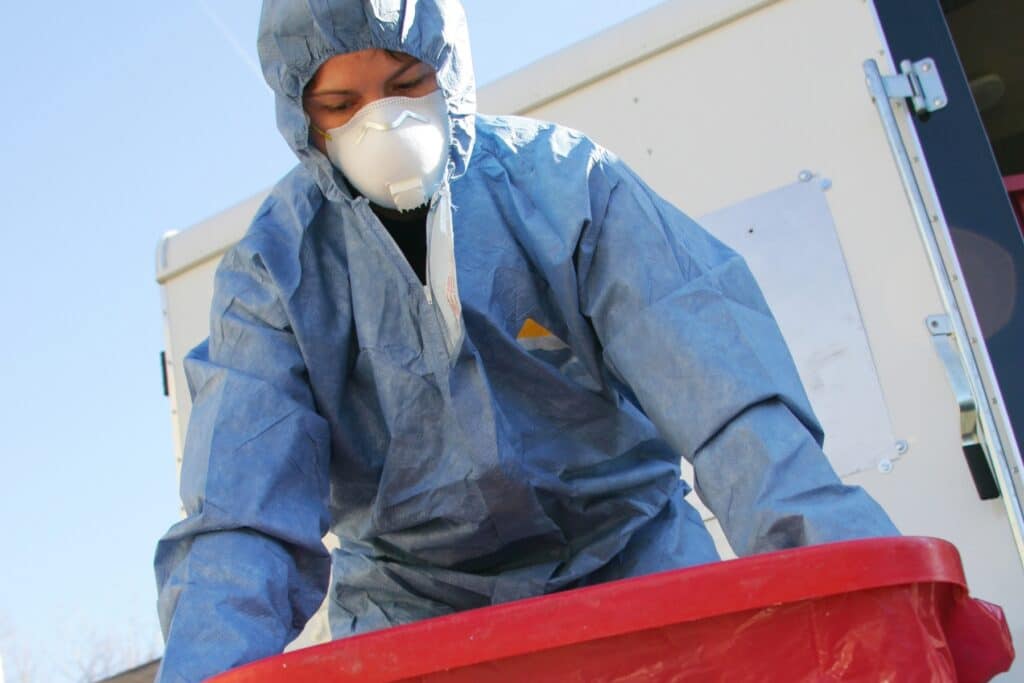Disposal Options for Hazardous Waste: Choosing the Right Method

Proper disposal of hazardous waste is essential for maintaining environmental sustainability and safeguarding public health. It’s important to understand and pick the best trash disposal procedure. This article on our website will look at various hazardous waste disposal choices and offer advice on choosing the best one. By making informed choices, you can ensure compliance, minimize environmental impact, and protect your organization.
Incineration
Incineration is a standard disposal method for hazardous waste, especially for flammable materials, or to destroy through high-temperature combustion. These facilities have sophisticated equipment to control emissions and ensure the safe treatment of waste. However, it’s essential to check if your waste is compatible with incineration and comply with local regulations regarding air emissions.
Chemical Treatment
Chemical treatment involves modifying the hazardous waste’s chemical properties to render it less harmful or non-toxic. This method is suitable for liquids, sludges, or contaminated solids. Chemical treatment can neutralize, stabilize, or oxidize the waste, reducing its hazardous characteristics. Ensure the chosen treatment process for your specific waste complies with handling or storage requirements.
Landfill Disposal
Landfill disposal involves burying hazardous waste in designated facilities designed to minimize environmental impact. Landfills for hazardous waste must meet stringent regulations to prevent soil and water contamination. Classifying your waste correctly is essential to ensure it is suitable for landfill disposal. Some materials may require pre-treatment or stabilization before disposal in a landfill.
Recycling
Recycling hazardous waste is an environmentally-friendly option involving transforming waste into reusable products or recovering valuable resources. This method reduces the demand for raw materials and minimizes waste generation. Explore recycling programs specific to hazardous waste, such as recycling certain chemicals, electronic waste, or batteries.
Secure Land Disposal
Secure land disposal involves burying hazardous waste in specifically designed, lined facilities to prevent leaching into the environment. This method is suitable for waste that cannot be treated or recycled. Secure land disposal facilities must meet rigorous regulatory standards and ongoing monitoring to ensure long-term containment and environmental protection.
Bioremediation
Bioremediation is a natural and sustainable method that utilizes microorganisms to break down hazardous substances into harmless byproducts. This method is effective for organic waste, such as petroleum products or certain chemicals. Bioremediation can occur in situ, where the waste is treated on-site, ex-situ, or to a specialized facility.
Partnering with a Hazardous Waste Management Company:
Navigating the complexities of hazardous waste disposal can be challenging. Partnering with a reputable hazardous waste management company, such as MedPro Disposal, can provide expert guidance and ensure proper disposal practices. These companies have the expertise, resources, and regulatory knowledge to handle hazardous waste in compliance with regulations, offering peace of mind and environmental protection.
Conclusion
Properly disposing of hazardous waste is crucial for protecting the environment, complying with regulations, and ensuring public safety. By understanding the different disposal options available and considering factors such as waste characteristics, regulatory requirements, and environmental impact, you can choose the most appropriate disposal method for your hazardous waste. In addition, partnering with a trusted waste management company like MedPro Disposal can further support your efforts in compliant and safe hazardous waste disposal. Let’s make responsible choices that preserve our environment for future generations.
References:
https://www.epa.gov/hw/hazardous-waste-transportation
https://www.fmcsa.dot.gov/regulations/hazardous-materials/how-comply-federal-hazardous-materials-regulations


